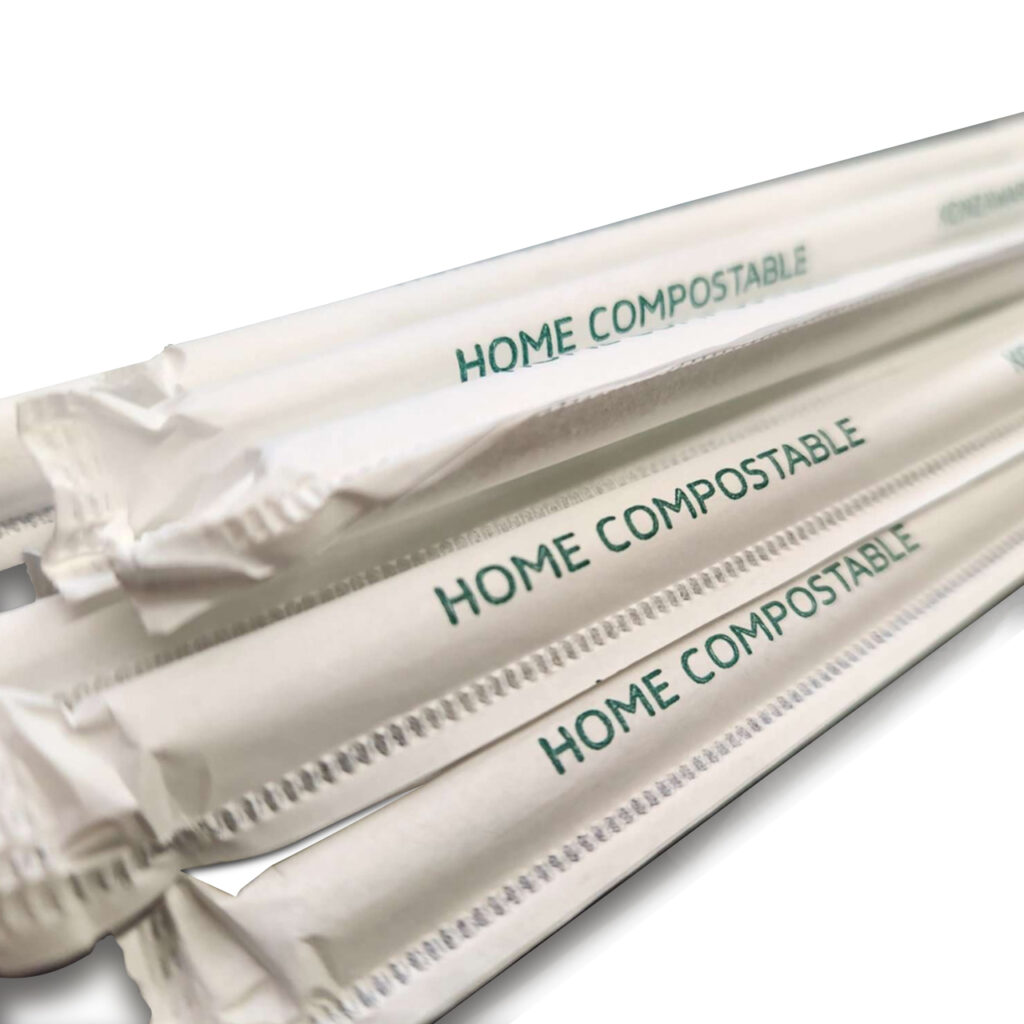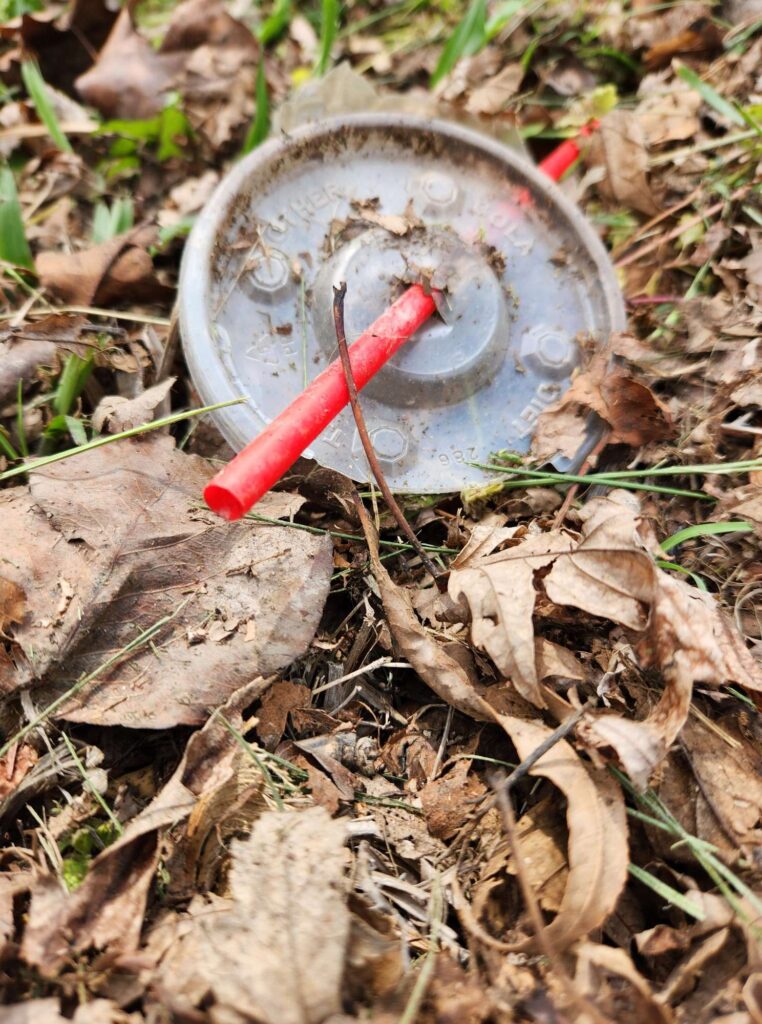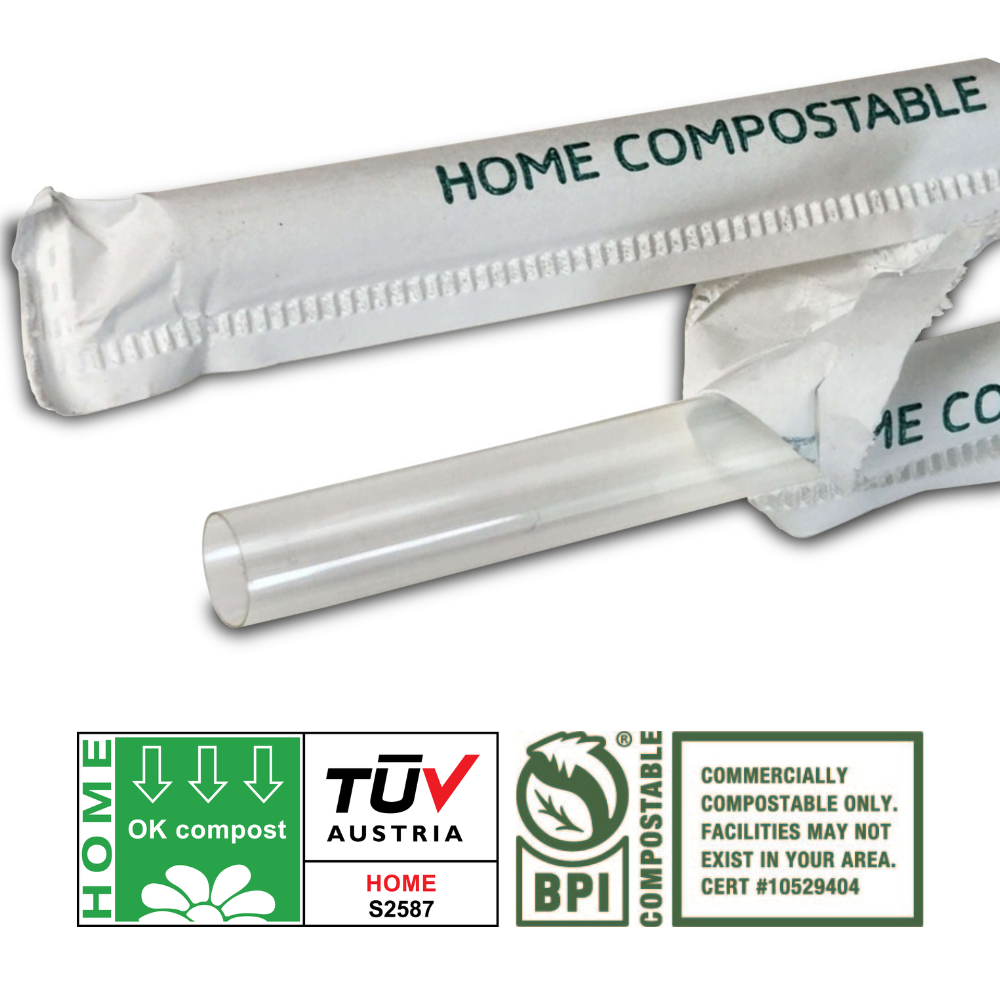Introduction
In recent years, there has been a growing concern about the environmental impact of single-use plastic products, including plastic straws. As a result, many individuals and businesses have turned to biodegradable straws as a more sustainable alternative. These straws are designed to break down naturally over time, reducing the amount of waste that ends up in landfills or polluting our oceans and waterways. However, many want to know how do biodegradable straws decompose.
Biodegradable straws are made from materials that can be broken down by microorganisms, such as bacteria and fungi, into simpler compounds. These materials can include plant-based polymers, such as cornstarch or PLA (polylactic acid), which are derived from renewable resources. Unlike traditional plastic straws, which can take hundreds of years to decompose, biodegradable straws can break down in a matter of months or years, depending on the specific material and environmental conditions.
The process of decomposition for biodegradable straws begins when they are exposed to moisture and microorganisms. These microorganisms consume the biodegradable materials, breaking them down into smaller pieces. Over time, these pieces continue to break down further until they eventually become part of the natural environment, without leaving behind harmful residues or microplastics.
Factors that contribute to the decomposition of biodegradable straws include temperature, humidity, and the presence of microorganisms. Warmer temperatures and higher levels of moisture can accelerate the decomposition process, while colder temperatures and drier conditions can slow it down. Additionally, the presence of microorganisms, such as bacteria and fungi, is essential for breaking down the biodegradable materials.
It is important to note that the decomposition of biodegradable straws is most effective in industrial composting facilities, where the conditions are optimized for the breakdown of organic materials. However, even in home composting or natural environments, biodegradable straws will eventually decompose, although at a slower rate.
Understanding the process of decomposition of biodegradable straws is crucial for assessing their environmental impact and sustainability. By choosing biodegradable straws over traditional plastic ones, individuals and businesses can contribute to reducing plastic waste and protecting our planet’s ecosystems.
What are biodegradable straws?
Biodegradable straws are a type of straw that is designed to break down naturally over time. These straws are typically made from materials such as plant-based plastics, paper, or even bamboo. Unlike traditional plastic straws, which can take hundreds of years to decompose, biodegradable straws are designed to break down much more quickly, reducing their impact on the environment.
The main goal of biodegradable straws is to provide a more sustainable alternative to traditional plastic straws. Plastic straws are a major contributor to plastic pollution, with millions of straws ending up in landfills and oceans every day. Biodegradable straws offer a solution to this problem by breaking down into natural materials that can be easily absorbed by the environment.
The process of decomposition for biodegradable straws can vary depending on the material they are made from. For example, plant-based plastics may require specific conditions, such as exposure to sunlight or moisture, in order to break down. Paper straws, on the other hand, can decompose more easily and quickly, especially when exposed to moisture.
Factors that contribute to the decomposition of biodegradable straws include temperature, humidity, and the presence of microorganisms. These factors can help to accelerate the breakdown process and ensure that the straws do not linger in the environment for an extended period of time.
The environmental impact of biodegradable straws is generally much lower than that of traditional plastic straws. While they still require resources to produce, such as water and energy, they do not contribute to the same level of pollution and waste. Additionally, the use of biodegradable straws can help to reduce the demand for single-use plastics, which can have a significant positive impact on the environment.
In conclusion, biodegradable straws are a more sustainable alternative to traditional plastic straws. They are designed to break down naturally over time, reducing their impact on the environment. Factors such as temperature, humidity, and the presence of microorganisms contribute to the decomposition process. The use of biodegradable straws can help to reduce plastic pollution and promote a more sustainable future.
The importance of biodegradable straws
Biodegradable straws have gained significant attention in recent years due to the growing concern over plastic pollution and its impact on the environment. Traditional plastic straws are one of the top contributors to plastic waste, with millions of them ending up in landfills and oceans every day. These straws take hundreds of years to decompose, releasing harmful chemicals and microplastics into the environment.
The importance of biodegradable straws lies in their ability to break down naturally and quickly, without leaving behind harmful residues. Unlike traditional plastic straws, which are made from non-renewable resources like petroleum, biodegradable straws are typically made from plant-based materials such as cornstarch, wheat, or bamboo. These materials are renewable and can be grown and harvested sustainably.
By using biodegradable straws, we can significantly reduce the amount of plastic waste that ends up in landfills and oceans. When these straws decompose, they do not release toxic chemicals or microplastics, making them a much safer and environmentally friendly alternative. Additionally, the production of biodegradable straws has a lower carbon footprint compared to traditional plastic straws, as they require less energy and resources to manufacture.
Another important aspect of biodegradable straws is their potential to promote a circular economy. Unlike traditional plastic straws, which are often used once and then discarded, biodegradable straws can be composted or recycled, allowing them to be reused or returned to the environment in a beneficial way. This helps to reduce the demand for new materials and minimizes the overall environmental impact.
In conclusion, the importance of biodegradable straws lies in their ability to address the issue of plastic pollution and promote sustainability. These straws offer a more environmentally friendly alternative to traditional plastic straws, as they decompose naturally and do not release harmful chemicals or microplastics. By using biodegradable straws, we can significantly reduce our plastic waste and contribute to a more sustainable future.
How do biodegradable straws decompose?
Biodegradable straws are designed to break down naturally over time, unlike traditional plastic straws that can take hundreds of years to decompose. The decomposition process of biodegradable straws is influenced by various factors, including the material they are made from and the environmental conditions they are exposed to.
Most biodegradable straws are made from materials such as paper, bamboo, or plant-based plastics. These materials are chosen for their ability to break down into natural elements, such as carbon dioxide, water, and biomass, through the action of microorganisms. The specific decomposition process can vary depending on the material used.
For example, paper straws are typically made from renewable resources like wood pulp. When exposed to moisture and microorganisms, the paper fibers start to break down. The microorganisms, such as bacteria and fungi, feed on the organic material and release enzymes that break down the paper into simpler compounds. Over time, the paper straw will completely decompose and return to the environment as organic matter.
Bamboo straws, on the other hand, are made from the hollow stems of bamboo plants. Bamboo is a fast-growing and highly renewable resource. When bamboo straws are discarded and exposed to moisture, the natural fibers of the bamboo start to break down. The decomposition process is similar to that of paper straws, with microorganisms breaking down the organic material and returning it to the environment.
Plant-based plastics, such as those made from cornstarch or sugarcane, are another common material used for biodegradable straws. These plastics are derived from renewable resources and are designed to break down more quickly than traditional plastics. When exposed to heat, moisture, and microorganisms, the molecular structure of the plant-based plastic starts to break down, eventually decomposing into natural elements.
It is important to note that the decomposition of biodegradable straws requires specific environmental conditions. Adequate moisture, oxygen, and the presence of microorganisms are necessary for the decomposition process to occur. If biodegradable straws are disposed of in landfills or other environments lacking these conditions, their decomposition may be significantly slowed down or even halted.

Understanding the decomposition process of biodegradable straws is crucial for assessing their environmental impact and sustainability. By choosing biodegradable straws and ensuring their proper disposal, we can contribute to reducing plastic waste and protecting the environment.
Factors that contribute to the decomposition of biodegradable straws
Biodegradable straws are designed to break down naturally over time, but the rate of decomposition can vary depending on several factors. Understanding these factors can help us make informed decisions about the use and disposal of biodegradable straws.
1. Material composition: Biodegradable straws are typically made from plant-based materials such as cornstarch, PLA (polylactic acid), or paper. The composition of these materials plays a significant role in their decomposition. For example, straws made from PLA may require specific conditions, such as high temperatures and moisture, to decompose effectively.
Straws made from sustainable wood pulp can decompose in your backyard compost heap.
2. Environmental conditions: The environment in which biodegradable straws are disposed of can greatly impact their decomposition. Factors such as temperature, humidity, and exposure to sunlight can all influence the rate at which the straws break down. In general, warmer and more humid environments tend to accelerate decomposition.
3. Microorganisms: Microorganisms, such as bacteria and fungi, play a crucial role in the decomposition process. These organisms break down the molecular structure of the straws, converting them into simpler compounds. The presence of these microorganisms can vary depending on the disposal method and the environment in which the straws are discarded.
4. Size and thickness: The size and thickness of biodegradable straws can also affect their decomposition. Thicker straws may take longer to break down compared to thinner ones. Similarly, larger straws may require more time to decompose fully.
5. Proper disposal: Proper disposal methods can significantly impact the decomposition of biodegradable straws. If these straws are not disposed of in the appropriate waste streams, such as compost bins or recycling facilities, they may not decompose as intended. It is essential to follow local waste management guidelines to ensure the proper disposal of biodegradable straws.
By considering these factors, we can better understand the decomposition process of biodegradable straws and make informed choices about their use and disposal. It is important to note that while biodegradable straws offer a more sustainable alternative to traditional plastic straws, they still require proper disposal to minimize their environmental impact.
The environmental impact of biodegradable straws
Biodegradable straws have gained popularity as a more sustainable alternative to traditional plastic straws. However, it is important to understand the environmental impact of these straws to make informed choices about their use.
One of the key benefits of biodegradable straws is that they break down naturally over time. Unlike traditional plastic straws that can take hundreds of years to decompose, biodegradable straws are designed to degrade within a shorter period. The exact time it takes for biodegradable straws to decompose can vary depending on the material they are made from and the environmental conditions they are exposed to.
When biodegradable straws decompose, they typically break down into smaller pieces. These smaller pieces can then be further broken down by microorganisms such as bacteria and fungi. These microorganisms play a crucial role in the decomposition process by breaking down the molecular structure of the straws and converting them into simpler compounds.
The decomposition of biodegradable straws is influenced by several factors. The temperature, humidity, and oxygen levels in the environment can all affect the rate at which the straws decompose. In general, warmer and more humid conditions tend to accelerate the decomposition process. Additionally, the presence of microorganisms and other decomposers in the environment is essential for the breakdown of biodegradable straws.
While biodegradable straws offer a more environmentally friendly alternative to plastic straws, it is important to consider their overall impact. The production of biodegradable straws still requires resources and energy, and their disposal can also have environmental consequences. If not disposed of properly, biodegradable straws can still contribute to pollution and harm wildlife.
To minimize the environmental impact of biodegradable straws, it is crucial to dispose of them correctly. Many biodegradable straws can be composted, but it is important to check the specific instructions provided by the manufacturer. Proper disposal ensures that the straws can break down in a controlled environment and contribute to the nutrient cycle rather than becoming waste.
In conclusion, understanding the environmental impact of sustainable eco-friendly drinking straws is essential for making sustainable choices. While these straws do decompose naturally, it is important to consider factors such as production, disposal, and overall resource consumption. By using and disposing of biodegradable straws responsibly, we can minimize their environmental impact and contribute to a more sustainable future.

Comparing biodegradable straws to other alternatives
When it comes to finding sustainable alternatives to single-use plastic straws, biodegradable straws have gained significant attention. However, it is important to compare them to other alternatives to understand their true environmental impact.
One popular alternative to biodegradable straws is reusable straws made from materials such as stainless steel, glass, or bamboo. These straws can be used multiple times, reducing the amount of waste generated. They are also durable and can withstand high temperatures, making them suitable for both hot and cold beverages. Reusable straws are a great option for individuals who are committed to reducing their environmental footprint and are willing to carry their own straws with them.
Another alternative to biodegradable straws is compostable straws. Unlike biodegradable straws, which break down naturally over time, compostable straws require specific conditions to decompose. These straws are made from plant-based materials, such as cornstarch or PLA (polylactic acid), and can be broken down in industrial composting facilities. However, it is important to note that compostable straws may not decompose properly in home compost bins or landfill environments, as they require specific temperatures and microbial activity to break down.
While biodegradable straws are a step in the right direction, it is crucial to consider the overall lifecycle of the product. This includes factors such as the resources used in production, transportation emissions, and end-of-life disposal options. Additionally, the availability and accessibility of recycling or composting facilities in different regions should be taken into account.
Ultimately, the choice between biodegradable straws and other alternatives depends on individual preferences and circumstances. Reusable straws are a long-term investment that can significantly reduce waste, while compostable straws may be suitable for individuals who have access to industrial composting facilities. It is important to consider the entire lifecycle of the product and make an informed decision based on the available options and environmental considerations.
In conclusion, while biodegradable straws are a promising alternative to single-use plastic straws, it is essential to compare them to other alternatives to understand their true environmental impact. By considering factors such as reusability, compostability, and overall lifecycle, individuals can make informed choices that align with their sustainability goals.
Tips for proper disposal of biodegradable straws
Proper disposal of biodegradable straws is crucial to ensure their effective decomposition and minimize their environmental impact. Here are some tips on how to dispose of biodegradable straws responsibly:
1. Separate and sort: When disposing of biodegradable straws, it is important to separate them from other waste materials. This allows for easier identification and proper handling of the straws during the decomposition process.
2. Composting: Biodegradable straws are designed to break down naturally in composting environments. If you have access to a composting facility or a home composting system, you can place the straws in the compost bin. Make sure to cut the straws into smaller pieces to speed up the decomposition process.
3. Recycling: Some biodegradable straws are made from materials that can be recycled. Check the packaging or consult the manufacturer’s guidelines to determine if the straws can be recycled. If they can, make sure to rinse them thoroughly before placing them in the recycling bin.
4. Landfill disposal: If composting or recycling options are not available, biodegradable straws can be disposed of in the landfill. However, it is important to note that the decomposition process in landfills is slower due to the lack of oxygen and sunlight. Therefore, it is still recommended to choose composting or recycling options whenever possible.
5. Avoid littering: Never litter biodegradable straws, as they can still cause harm to wildlife and contribute to pollution. Always dispose of them properly in designated waste bins or recycling containers.
6. Educate others: Spread awareness about the proper disposal of biodegradable straws. Encourage others to choose biodegradable alternatives and educate them on the importance of responsible waste management.
By following these tips, you can ensure that biodegradable straws are disposed of in a way that maximizes their decomposition and minimizes their impact on the environment. Remember, responsible disposal is just as important as choosing biodegradable options in the first place. Together, we can make a positive impact on the environment and work towards a more sustainable future.
The future of biodegradable straws
The future of biodegradable straws looks promising as more and more people become aware of the environmental impact of single-use plastics. With the increasing demand for sustainable alternatives, the market for biodegradable straws is expected to grow significantly in the coming years.
One of the key factors driving the future of biodegradable straws is the growing concern over plastic pollution. Traditional plastic straws can take hundreds of years to decompose, and they often end up in landfills or oceans, causing harm to wildlife and ecosystems. Biodegradable straws, on the other hand, are designed to break down naturally over time, reducing their environmental impact.
Another factor contributing to the future of biodegradable straws is the increasing number of regulations and bans on single-use plastics. Many countries and cities have already implemented restrictions on plastic straws, and more are expected to follow suit. This creates a significant market opportunity for biodegradable straw manufacturers, as businesses and consumers seek out sustainable alternatives.
In addition to regulations, consumer preferences are also shifting towards more eco-friendly options. People are becoming more conscious of their environmental footprint and are actively seeking out products that align with their values. Biodegradable straws offer a solution that allows individuals to enjoy the convenience of a straw while minimizing their impact on the planet.
The future of biodegradable straws also holds potential for innovation and advancements in technology. Researchers and manufacturers are constantly working on improving the materials used in biodegradable straws to make them more durable and efficient. This includes exploring new biodegradable materials, such as plant-based plastics or compostable materials, that can further enhance the sustainability of these straws.
Overall, the future of biodegradable straws is bright. As awareness of plastic pollution continues to grow and regulations on single-use plastics become more widespread, the demand for sustainable alternatives like biodegradable straws will only increase. With ongoing research and development, these straws will continue to evolve, offering even more environmentally friendly options for consumers. By choosing biodegradable straws, individuals can contribute to a cleaner and healthier planet for future generations.
The Future of Biodegradable Straws
In recent years, there has been a growing concern about the environmental impact of single-use plastic straws. As a result, biodegradable straws have emerged as a more sustainable alternative.
The demand for biodegradable straws is expected to increase in the coming years as more individuals and businesses become aware of the need to reduce plastic waste. With advancements in technology and manufacturing processes, the future of biodegradable straws looks promising.
One aspect of the future of biodegradable straws is the development of new materials. Currently, many biodegradable straws are made from materials such as paper, bamboo, or plant-based plastics like sustainable wood pulp. However, researchers and scientists are constantly exploring new materials that are even more sustainable and have a lower environmental impact. This includes materials derived from agricultural waste or even seaweed.
Another aspect of the future of biodegradable straws is the improvement of their durability and functionality. While biodegradable straws are designed to break down naturally, it is important that they still perform their intended function effectively. Manufacturers are working on enhancing the strength and flexibility of biodegradable straws to ensure they can withstand various beverages and usage scenarios.
Additionally, the future of biodegradable straws involves the development of more efficient recycling and composting systems. Proper disposal is crucial for the effective decomposition of biodegradable straws. As awareness grows, there will likely be an increase in infrastructure and facilities dedicated to the collection and processing of biodegradable waste.
Furthermore, the future of biodegradable straws also depends on consumer behavior and education. It is essential to educate individuals about the benefits of using biodegradable straws and how to properly dispose of them. By encouraging responsible consumption and waste management practices, the demand for biodegradable straws can continue to rise.
In conclusion, the future of biodegradable straws is promising. With ongoing research and development, we can expect to see advancements in materials, durability, and disposal systems. By embracing biodegradable straws and making conscious choices, we can contribute to a more sustainable future and reduce the environmental impact of single-use plastic straws. Hopefully, this article has shed light on how biodegradable straws decompose.




